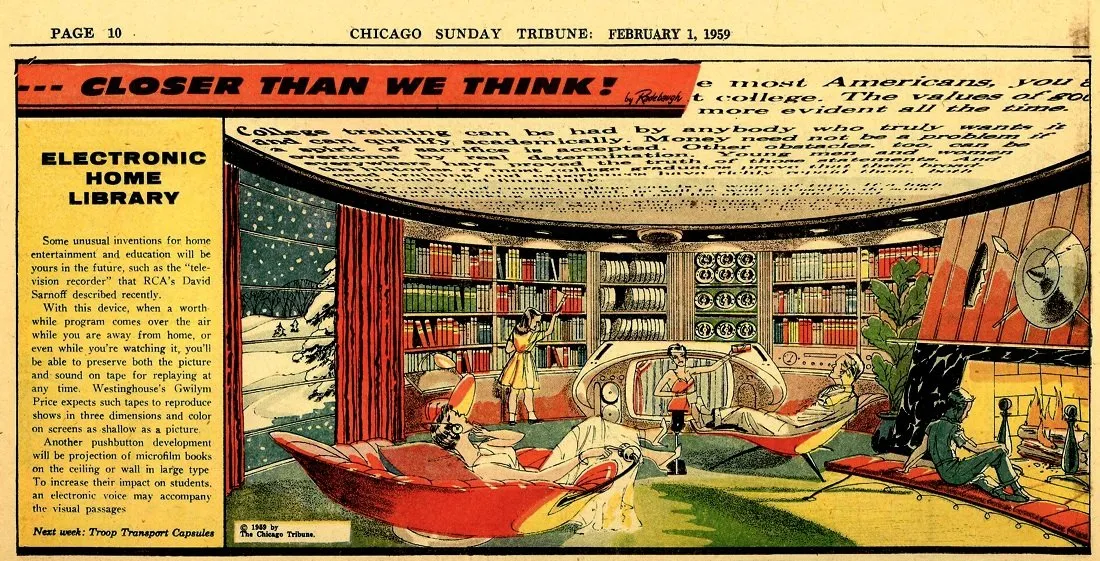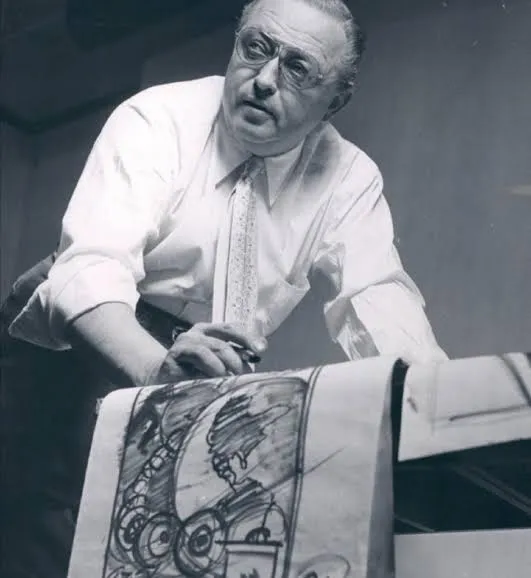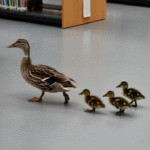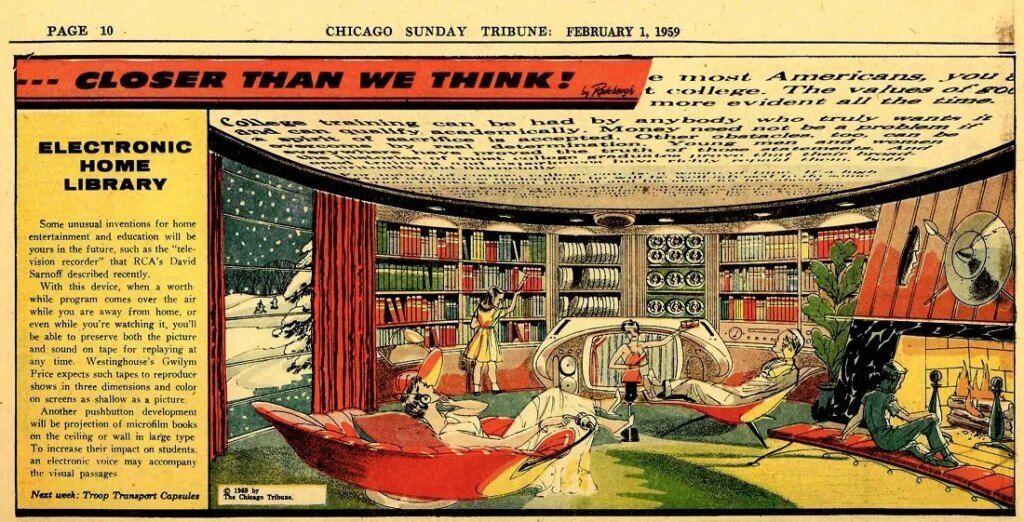Back in 1959, an illustrator outlined their vision of the future. But did it actually end up coming true? Learn more about Arthur Radebaugh’s work.
Back in the 1950s, new technology was shattering boundaries, taking humans into space for the first time. Humanity was dreaming in a big way, fixing its attention on the stars and beyond. But back home, visions of the future were a little more mundane, although still pretty cool.
In a world of gramophones and print newspapers, the rise of the television set was a real revelation. And it set imaginations running wild as people wondered what would come next.
So, between 1958 and 1963, Arthur Radebaugh put pen to paper to create a series of illustrations for the Chicago Tribune, entitled “Closer Than We Think!” Radebaugh’s drawings were eye-catching in their own right, but their content would have been seriously exciting for newspaper readers at the end of the ‘50s. But, more than 60 years later, was he correct?
Closer than We Think: Arthur Radebaugh’s Vision
Radebaugh’s Closer Than We Think series spanned several years in the late 1950s and early 1960s and tantalized audiences with visions of the near future. Robot Railroading dealt with fully-automated public vehicles, the One-World Job Market focused on remote working and telecommuting, while Highway to Russia is pretty self-explanatory.

It’s the Electronic Home Library that is most relevant to us, though. Released in February 1959, the image paints a picture of a sprawling home entertainment system, covering a wealth of different media and cultural works.
As her mother and father recline on couches, a young girl selects a title from this library. The image’s commentary describes how moving pictures will be recorded and stored, and how televisions will reproduce images in three dimensions. Meanwhile, microfilm books will be projected onto huge spaces – the ceiling, in this particular image – and accompanied by electronic voice technology to help students and other readers.
Who Was Arthur Radebaugh?
Born in Coldwater, Michigan, in 1906, Arthur Radebaugh was a skilled illustrator and airbrush artist. His charming images demonstrate his proficiency and are stunning examples of the retro-futurist art style that became so popular in the post-war years.

But he was not just an artist. Radebaugh’s background in industrial design and automotive development made him well-qualified to make technological predictions about the state of future society.
This is perhaps why Radebaugh’s visions are a little more measured than those we may be used to.
The idea of wild optimism after the dark days of World War II has been much parodied, and we’re still waiting for the personal jetpacks and teleportation devices we were promised. Instead, Radebaugh’s speculations seem to be grounded in the technological reality he knew well.
Was Arthur Correct?
At first glance, Arthur’s predictions seem startlingly accurate. Automated vehicles and devices are very much a real thing. Automated grocery stores and self-checkouts are a real thing, too, although their benefits are enjoyed by all genders, not just the ‘housewives’ repeatedly mentioned in Radebaugh’s illustration.
But what about the Electronic Home Library? Well, as anyone who ended up with mountains of DVDs, CDs, and VHSs can attest, this one seems pretty accurate too. It’s unclear if projecting a book onto a ceiling ever really took off, but electronic books and e-readers are definitely a thing.

Of course, we’ve surpassed this vision now. Through digital streaming services, we have access to an untold amount of music, movies, TV shows, books, video games, and any other piece of digital media you care to mention. The living room depicted in Arthur’s illustration is nice and spacious, but even that couldn’t house a library of this size.
Radebaugh’s vision of the near future has become our vision of the recent past.
Behind the Wizard’s Curtain: Radebaugh’s Secret
Arthur Radebaugh: skilled artist, technological visionary, occasionally proponent of outdated gender roles? Yep, Radebaugh was all these things. But let’s focus on his technological vision. What was his secret? How did he get so much right?
Well, in truth, Radebaugh had an advantage. A lot of the technology he mooted was in fact already on its way. The robo-train illustration, for example, premiered in 1960, but automatic trains were being tested on the New York subway in 1959. As for the Electronic Home Library, published in 1959, the first magnetic tape video recordings were made as early as 1951, and the technology was developing pretty rapidly by the end of the decade.

So Arthur Radebaugh wasn’t so much dealing with “Closer Than We Think” as “Pretty Much Already Here.” Although this should take nothing away from Radebaugh, and his brand of practically-viable visions of the future is more useful than things like bowling alleys in space or a tiny nuclear reactor in every home.
As for the illustrations themselves, they still look great. Perusing the artworks these days offers a fascinating trip into the psyche, innovation, and aesthetic of the post-war world.
Join our community of 1.5M readers
Like this story? You'll love our free weekly magazine.








